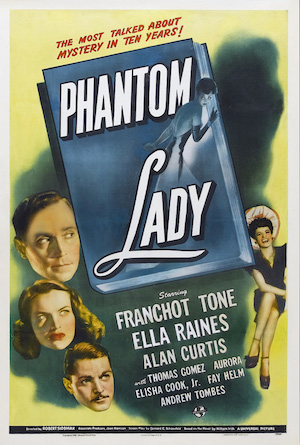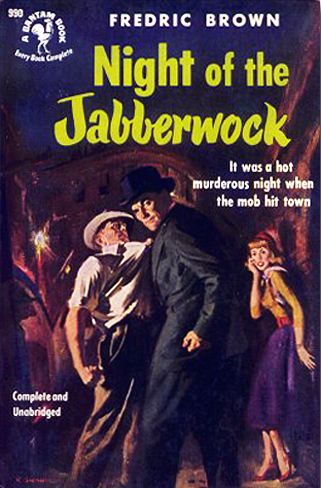By Scott A. Cupp
This is the 155th in my series of Forgotten, Obscure or Neglected Films
I really love the novels of Cornell Woolrich, whether writing under that name or William Irish or George Hopley. For a while, I had a very nice collection of first editions of his work including a beautiful copy of Phantom Lady. But I took the money and ran a long time ago.
Woolrich was a master of suspense and tension, particularly in his novels, though some also comes through in his films. Check out my review of Jacques Tourneau’s The Leopard Man which was based on Woolrich’s novel Black Alibi. It features one of the most terrifying scenes ever put on screen and that scene is straight out of the novel.
But, let’s talk about Phantom Lady. Scott Henderson (Alan Curtis) is a successful engineer in a bad marriage. On his anniversary he and his wife have a fight and he storms out of the apartment. He goes to a local bar where he meets a lonely woman with a gaudy hat. They make small talk and he invites her to go to a show. When he asks her name, she demurs, saying that they should enjoy the night with no names and no history. They take a cab to the show where a drummer tries to get her attention and the headliner Monteiro (Aurora) is seen wearing the same hat. Monteiro is obviously furious.
Henderson returns home to find police Inspector Burgess (Thomas Gomez) waiting. Henderson’s wife has been strangled with one of his neckties. Henderson isn’t worried about being arrested for the crime because he didn’t do it. But when the police question the bartender (Andrew Tombes) he says Henderson was alone. So does the cab driver. And when Monteiro is questioned, she remembers nothing about the Henderson’s companion and the hat the argued about isn’t even among her costumes.
Henderson finds himself on trial for murder and, with no alibi, he is quickly convicted and sentenced to die. The only one convinced he’s innocent is his secretary, Carol “Kansas” Richmond (Ella Raines), who is in love with him. She cannot find any other way to help him, so she shadows the bartender. When he makes a casual slip about being paid, he tries to attack her and ends up getting killed in traffic. At that point, Carol suspects she is on the right trail.
She begins to track down the drummer (Elisha Cook, Jr.) who admits that he was paid $500 to forget what he saw. Carol calls Burgess, but by the time he gets there the drummer is dead. At this point, the film gives away the identity of the real killer, something which was not disclosed in the book until the very end.
Scott’s friend, Jack Marlow (Franchot Tone) has been in South America and when he returns he agrees to help Carol solve Scott’s problem. Together they find the Phantom Lady and the hat, but the murderer is still about and Carol is in deep trouble.
This was a good film, just not the great film which might have been made from the book. In glorious black and white, it has many of the features of a good noir film but somehow falls flat. The tense moments just don’t quite come across that way, until the point at which Carol confronts the killer. Part of the problem is the source material. Woolrich novels sometimes rely on coincidence and, as in this case, you have to buy that people are willing to let a man die after being paid to forget something. Somehow I tend to have a better opinion of people than that. Of the four, one should have broken down.
When reading the books, the breakneck pacing gets you through. With the film, that pacing isn’t there and the flaws emerge.
I still like this film, though, and I still love the work of Woolrich. I’m hoping you do to. TCM runs this film fairly regularly and you should check it out when you can. It’s not Out of the Past or Double Indemnity, but it’s still worthwhile.
Series organizer Todd Mason hosts more Tuesday Forgotten Film reviews at his own blog and posts a complete list of participating blogs.



